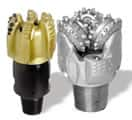bit
「bit」の意味
「bit」は英語で、主に二つの意味がある。一つ目は「少し」や「一部分」という意味で、何かの一部を指す際に用いられる。二つ目は、情報技術の分野で「ビット」と呼ばれる単位で、データ量や情報の最小単位を示す。ビットは、0と1の二つの値を持ち、これらを組み合わせることでデータを表現する。「bit」の発音・読み方
「bit」の発音は、IPA表記では/bɪt/となり、カタカナ表記では「ビット」となる。日本人が発音する際のカタカナ英語では「ビット」と読む。発音によって意味や品詞が変わる単語ではないため、特別な注意は必要ない。「bit」の語源
「bit」の語源は、古英語の「bita」に由来する。これは「切り取られた部分」や「小片」といった意味を持つ言葉で、現代英語の「bit」につながる。また、「ビット」という情報技術の用語は、20世紀初頭にアメリカの科学者ジョン・チューキが提案したもので、「binary digit」(二進数の数字)を短縮した言葉である。「bit」の類語
「bit」の類語として、「piece」や「portion」が挙げられる。「piece」は「一部分」や「一片」といった意味で、「bit」と同様に何かの一部を指す際に用いられる。「portion」は「部分」や「割り当てられた量」という意味で、特定の量や範囲を示す際に使用される。「bit」に関連する用語・表現
「bit」に関連する用語や表現として、「kilobit」や「megabit」がある。「kilobit」は、1000ビットを表す単位で、データ量や通信速度を示す際に用いられる。「megabit」は、100万ビットを表す単位で、より大きなデータ量や通信速度を示す際に使用される。「bit」の例文
1. I ate a bit of chocolate.(チョコレートを少し食べた。)2. She read a bit of the book.(彼女はその本の一部を読んだ。)
3. The file size is 8 bits.(ファイルサイズは8ビットである。)
4. The data is encoded in 16 bits.(データは16ビットで符号化されている。)
5. I found a bit of information on the topic.(そのトピックに関する少しの情報を見つけた。)
6. The computer can process 32 bits at a time.(コンピュータは一度に32ビットを処理できる。)
7. He knows a bit about programming.(彼はプログラミングについて少し知っている。)
8. The internet speed is measured in megabits per second.(インターネットの速度はメガビット毎秒で測定される。)
9. The storage capacity is 64 kilobits.(ストレージ容量は64キロビットである。)
10. I need a bit more time to finish the project.(プロジェクトを終わらせるためにもう少し時間が必要だ。)
ビット【bit】
ビット【bit】
ビット【bit】
ビット
ビット
ビットとは、コンピュータが処理する最小の単位のことである。「BInary digiT」がその語源とされている。
ビットは、2進数の0と1に対応している。コンピュータでは通常、8ビット(1バイト)を1つの単位として扱い、1バイトは、0から2進数の11111111(10進数の255)までが表現可能となる。
コンピュータ内部の四則演算では、ビットをシフトして処理することが多い。例えば、数値を2で割る時は、ビットの内容を右にシフトすることで結果が求められる。
なお、ビットは、JIS規格で、ビットの概念の提案者で情報理論の創始者と言われるクロード・シャノンにちなんで、シャノンと定義されている。ただし、プログラム開発現場において、シャノンが実際に使用されている例は少ない。
ビット
【英】: bit, drilling bit
同義語: drilling bit
ビット Bit
| ロータリー掘削は,ドリルパイプの先端に一種の“キリ”を取り付け,これを高速で回転させ下向きの推力を与えながら,岩石を砕き,削って地中を掘り進む。このキリあるいは蚤の役目を果たす道具をビットと呼ぶ。ビットは主に,回転運動により掘削するロータリービットと,上下運動により掘削するハンマービットの2種類に分類される。ロータリービットはベアリング機構を有するローラーコーンビットと,ベアリング機構を持たないフィックスドカッタービットの2種類がある。ビットの選択は,地層のタイプにより決められる。 | |||||||
 |
|||||||
| 分野 | 掘削機器用語 | ||||||
| 同義語 | |||||||
| 関連用語 | ローラーコーンビット, フィックスドカッタービット, バジャービット, ブレードビット, エアーパーカッションビット, コアビット, ビットノズル, ブレイクイーブンカーブ, ビットプレッシャードロップ | ||||||
| 類似語 | |||||||
| 略語 | |||||||
 |
|||||||
|
|||||||
 |
|||||||
ビット
ビット
出典: フリー百科事典『ウィキペディア(Wikipedia)』 (2023/04/10 13:38 UTC 版)
ビット (bit) は、情報理論、コンピューティング、多くのデジタル通信における情報の基本単位である。ビットは、コンピューティングでの二値ストレージやデジタル通信における二値シンボルのことも意味し、そのストレージ・シンボルには、(情報量の単位としての)1ビットの情報を記憶・符号化できる。二進数の1桁のことであり、その名前はbinary digitの2語の一部を組み合わせた語(かばん語)である[1]。
情報理論では、1ビットは通常、等しい確率で0または1である二進数ランダム変数の情報量(情報エントロピー)[2]、またはそのような変数の値が判明したときに得られる情報として定義される[3][4]。情報量の単位として、このビットはクロード・シャノンにちなんで名付けられたシャノンとも呼ばれる[5]。厳密には、ビットはデータ量(ストレージ量)の単位、シャノンは情報量の単位と区別するが、歴史的経緯により後者も前者と同じ単位(ビット)で表現され、誤りの可能性を無視してよければNビットのストレージによりNビットの情報量が保持できる。
1ビットの情報は、二進数の1桁として論理値を表し、2つの値のうち1つのみを持つ。2つの状態を持つ何らかの機構によって物理的に実装できる。この状態値は、最も一般的には「0」/「1」として表されるが、真/偽 (True/False)、yes/no、+/-、on/offなどの他の表現も可能である。この値と実際の物理的状態との対応は慣習の問題であり、同じデバイスやプログラム内でも異なる割り当てを使用することができる。
ビットの単位記号は、IEC 80000-13:2008 では "bit"、IEEE 1541-2002やIEEE Std 260.1-2004では"b"(小文字のビー)を推奨している。一般に8桁の二進数のグループ(8ビット)は「1バイト (byte)」と呼ばれるが、歴史的にはバイトのサイズは厳密には定義されていない。
歴史
データを離散ビットによって表す方法は、バジル・ブションとジャン=バプティスト・ファルコンによって1732年に発明されジョゼフ・マリー・ジャカールが1804年に開発したパンチカードに使用され、後にセミオン・コルサコフ、チャールズ・バベッジ、ハーマン・ホレリス、およびIBMなどの初期のコンピュータメーカーにより採用された。また、鑽孔紙テープも同様の考えによるものであった。これら全てのシステムで、媒体(カードやテープ)は概念的に穴の位置の配列を保持していた。それぞれの位置における穴の有無が1ビットの情報を伝達した。ビットによる文章の符号化は、モールス信号(1844年)や、テレタイプ、ストックティッカー(1870年)などの初期のデジタル通信機でも使用されていた。
ラルフ・ハートレーは、1928年に情報の対数的計量の使用を提案した[6]。クロード・シャノンは、1948年の独創的な論文『通信の数学的理論』で「ビット」という言葉を初めて使用した[7][8][9]。シャノンは、その言葉は1947年1月9日にベル研究所でジョン・テューキーが書いたメモにおいて"binary information digit"(二進数情報桁)を略して"bit"と書いたことに由来するとしている[7]。1936年にヴァネヴァー・ブッシュは、当時の機械式コンピュータで使用されていたパンチカードに保存できる情報量のことを"bits of information"(情報のビット)と書いた[10]。コンラート・ツーゼによって構築された最初のプログラム可能なコンピュータは、数値に二進数表記を使用した。
物理的表現
ビットは、可能な2つの別個の状態のいずれかを保持するデジタルデバイスやその他の物理システムによって格納できる。例えばフリップフロップの2つの安定状態、スイッチの2つの位置、電気回路で取り得る電圧または電流の2つの異なるレベル、2つの異なる光強度レベル、磁性または電気極性の2つの方向、DNAの二本鎖の方向などである。
ビットはいくつかの形式で実装できる。ほとんどの最新のコンピュータデバイスでは、ビットは通常、電圧や電流のパルス、またはフリップフロップ回路の電気状態によって表される。
正論理を使用するデバイスの場合、1の数字値(または「真」(True) の論理値)は、0の表現よりもより高い正の電圧で表される。実際の電圧は、部品の耐久性やノイズ耐性など、部品の特性に応じて決定される。例えば、transistor-transistor logic (TTL) やその互換性のある回路では、デバイスの出力 (Output) は、0が0.4ボルト (V) 以下、1が2.6ボルト (V) 以上で表される。入力 (Input) は、0.8 V以下は0、2.2 V以上は1、として認識するように設定されている。
伝送と処理
ビットは、シリアル通信では一度に1つずつ、パラレル通信では複数のビットが同時に送信される。ビット演算では、ビットを1つずつ処理する場合がある。データ転送速度は、通常、kbit/sなどビット毎秒 (bit/s)にSI接頭語をつけた単位で表され、2進接頭辞は使用されない。
保存
ジャカード織機やバベッジの解析機関などの最も初期の非電子情報処理装置では、機械的なレバーやギアの位置、または紙のカードやテープの特定の位置の穴の有無としてビットが保存されていた。ディスクリートロジック用の初期の電気デバイス(エレベータや交通信号機の制御回路、電話交換機、コンラート・ツーゼのコンピュータなど)は、ビットを電気リレーのオン・オフの状態として表していた。1940年代からリレーが真空管に置き換えられたとき、コンピュータの設計者は、水銀遅延線を伝わる圧力パルス、ウィリアムス管の内面に蓄積される電荷、フォトリソグラフィ技術によってガラスの円盤に印刷される不透明なスポットなど、様々な保存方法を実験した。
1950年代および1960年代に、これらの方法は、磁気コアメモリ・磁気テープ・磁気ドラムメモリ・磁気ディスクなどの磁気記憶装置に大きく取って代わられた。磁気記憶装置では、ビットは強磁性フィルムの特定の領域の磁性の方向、またはある方向から他の方向への極性の変化として表現される。1980年代に開発された磁気バブルメモリでも同じ原理が使用され、鉄道の切符やクレジットカードなど磁気ストライプカードに使用されている。
DRAMなどの現代の半導体メモリでは、ビットはコンデンサに保存された電荷の2つのレベルで表される。特定のタイプのプログラマブルロジックデバイスや RAM では、回路の特定のポイントでの導電パスの有無によってビットが表される。光ディスクでは、ビットは反射面上の微小なピットの有無として表される。1次元バーコードでは、ビットは交互の黒と白の線の太さとして表される。
単位と記号
ビットは、国際単位系 (SI) では定義されていないが、国際電気標準会議 (IEC) が発行したIEC 60027では、二進数の単位の記号は "bit" であり、キロビットを表す "kbit" など全ての倍数で使用されると規定している[11]。ただし、小文字の "b" も広く使用されており、IEEE 1541-2002などで推奨されている。慣習的に、大文字の "B" はバイトを表すのに使用され、両者の間には8倍の差がある。
複数のビットを表す単位
| ビットの単位一覧 | ||||||
|---|---|---|---|---|---|---|
| SI接頭語 |
2進接頭辞 (IEC 60027-2による) |
|||||
| 単位 | 記号 | SI基準 | 慣用値 | 単位 | 記号 | 値 |
| キロビット | kbit | 103 | 210 | キビビット | Kibit | 210 |
| メガビット | Mbit | 106 | 220 | メビビット | Mibit | 220 |
| ギガビット | Gbit | 109 | 230 | ギビビット | Gibit | 230 |
| テラビット | Tbit | 1012 | 240 | テビビット | Tibit | 240 |
| ペタビット | Pbit | 1015 | 250 | ペビビット | Pibit | 250 |
| エクサビット | Ebit | 1018 | 260 | エクスビビット | Eibit | 260 |
| ゼタビット | Zbit | 1021 | 270 | ゼビビット | Zibit | 270 |
| ヨタビット | Ybit | 1024 | 280 | ヨビビット | Yibit | 280 |
伝統的に複数のビットを表す情報単位がいくつか使用されてきた。最も一般的なのは、1956年6月にワーナー・ブッフホルツによって作られた単位「バイト」である。これは、歴史的にコンピュータで1つのキャラクタの符号化に使用されるビットの集まりを表すために使用された[12][13][14][15][16]。このため、多くのコンピュータアーキテクチャで基本的なアドレスの単位として使用された。過去には様々なビット数のバイトが使用されてきたが、今日では8ビットを1バイトとする実装が広く使用されている。ただし、バイトの大きさが基礎となるハードウェア設計に依存するという曖昧さを回避するために、8ビットであることを明示的に示す単位「オクテット」が定義されている。
通常、コンピュータは、「ワード」と呼ばれる固定サイズのビットのグループ単位で操作を行う。バイトと同様に、1つのワードに含まれるビット数もハードウェア設計によって異なる。通常は8〜80ビットだが、一部の専用コンピュータではさらに大きくなる。21世紀初頭において、パーソナルコンピュータやサーバコンピュータのワードサイズは32ビットまたは64ビットである。
国際単位系では、基本となる単位の十進数の倍量・分量を表すSI接頭語が定義されている。これは一般的にビットやバイトに対しても適用されている。ただし、本来の十進数の倍量(1000の冪乗)ではなく、1024 (=210)の冪乗を表すのに使用されることもあり、曖昧さの回避のために1024の冪乗であることを明示する別の接頭辞が定義されている(2進接頭辞を参照)。
情報容量と情報圧縮
ストレージの情報容量や通信路の情報容量がビットやビット毎秒で表されるとき、多くの場合でバイナリデータを格納するコンピュータハードウェアの容量である二進数を指す[17]。ストレージの情報容量は、そこに格納される情報量の上限に過ぎない。ストレージに含まれる各ビットの2つの可能な値(1と0)の数が等しくない場合、ストレージに含まれる情報の情報量は、「情報容量」として表される数値よりも小さくなる。実際、値が完全に予測可能ならば、その値の読み取りからは新たな情報は得られない(不確実性の解決が発生せず、したがって情報が利用できないため、エントロピーはゼロである)。nビットのストレージを使用するコンピュータファイルに含まれる情報がm < nビットのみの場合、その情報は原則として少なくとも平均で約mビットで符号化できる。この原則は、データ圧縮技術の基礎である。最適に圧縮された場合、伝送容量は情報量に近づく[17]。
ビット単位の操作
一部のビット演算のプロセッサ命令(bit setなど)は、データをビットの集合と解釈して操作するのではなく、個別のビットを操作するレベルで動作する。
1980年代、ビットマップコンピュータディスプレイが一般的になると、一部のコンピュータでは、画面上の特定の矩形領域に対応するビットを設定・コピーするための特殊なビットブロック転送命令("bitblt"または"blit")を提供した。
バイトやワードといった単位におけるビット位置の定義は CPU によって異なる。右端(数値としての最小位、LSB)を第0ビットにしている流儀と、左端(数値としての最大位、MSB)を第0ビットにしている流儀の両方がある。現在は前者が多い。この違いをエンディアンといい、前者をリトルエンディアン、後者をビッグエンディアンという。
関連項目
- 整数型
- プリミティブ型
- 量子ビット
- ビットストリーム
- ボー
- 二進法
- 三進法
- バイト (byte)
- 8ビット
- オクテット (コンピュータ)
- キャラクタ (コンピュータ)
- ワード
- シャノン (単位) - ナット (単位) - ハートレー (単位)
- 情報量
- データ量の比較
脚注
- ^ Coded Character Sets, History and Development (1 ed.). Addison-Wesley Publishing Company, Inc.. (1980). p. x. ISBN 978-0-201-14460-4. LCCN 77--90165. オリジナルの2016-11-18時点におけるアーカイブ。 2016年5月22日閲覧。 [1]
- ^ Understanding Information Transmission, (2006)
- ^ Digital Communications, (2006)
- ^ IEEE Std 260.1-2004
- ^ “Units: B”. 2016年5月4日時点のオリジナルよりアーカイブ。2019年10月1日閲覧。
- ^ Information theory and coding. McGraw-Hill. (1963)
- ^ a b “A Mathematical Theory of Communication”. Bell System Technical Journal 27 (3): 379–423. (July 1948). doi:10.1002/j.1538-7305.1948.tb01338.x. hdl:11858/00-001M-0000-002C-4314-2. オリジナルの1998-07-15時点におけるアーカイブ。. "The choice of a logarithmic base corresponds to the choice of a unit for measuring information. If the base 2 is used the resulting units may be called binary digits, or more briefly bits, a word suggested by J. W. Tukey."
- ^ “A Mathematical Theory of Communication”. Bell System Technical Journal 27 (4): 623–666. (October 1948). doi:10.1002/j.1538-7305.1948.tb00917.x. hdl:11858/00-001M-0000-002C-4314-2.
- ^ A Mathematical Theory of Communication. University of Illinois Press. (1949). ISBN 0-252-72548-4. オリジナルの1998-07-15時点におけるアーカイブ。
- ^ “Instrumental analysis”. Bulletin of the American Mathematical Society 42 (10): 649–669. (1936). doi:10.1090/S0002-9904-1936-06390-1. オリジナルの2014-10-06時点におけるアーカイブ。.
- ^ National Institute of Standards and Technology (2008), Guide for the Use of the International System of Units. Online version. Archived 3 June 2016 at the Wayback Machine.
- ^ “Why is a byte 8 bits? Or is it?”. Computer History Vignettes (2000年8月8日). 2017年4月3日時点のオリジナルよりアーカイブ。2017年4月3日閲覧。 “[…] With IBM's STRETCH computer as background, handling 64-character words divisible into groups of 8 (I designed the character set for it, under the guidance of Dr. Werner Buchholz, the man who DID coin the term "byte" for an 8-bit grouping). […] The IBM 360 used 8-bit characters, although not ASCII directly. Thus Buchholz's "byte" caught on everywhere. I myself did not like the name for many reasons. […]”
- ^ “7. The Shift Matrix”. The Link System. IBM. (1956-06-11). pp. 5–6. Stretch Memo No. 39G. オリジナルの2017-04-04時点におけるアーカイブ。 2016年4月4日閲覧. "[…] Most important, from the point of view of editing, will be the ability to handle any characters or digits, from 1 to 6 bits long […] the Shift Matrix to be used to convert a 60-bit word, coming from Memory in parallel, into characters, or "bytes" as we have called them, to be sent to the Adder serially. The 60 bits are dumped into magnetic cores on six different levels. Thus, if a 1 comes out of position 9, it appears in all six cores underneath. […] The Adder may accept all or only some of the bits. […] Assume that it is desired to operate on 4 bit decimal digits, starting at the right. The 0-diagonal is pulsed first, sending out the six bits 0 to 5, of which the Adder accepts only the first four (0-3). Bits 4 and 5 are ignored. Next, the 4 diagonal is pulsed. This sends out bits 4 to 9, of which the last two are again ignored, and so on. […] It is just as easy to use all six bits in alphanumeric work, or to handle bytes of only one bit for logical analysis, or to offset the bytes by any number of bits. […]"
- ^ “The Word "Byte" Comes of Age...”. Byte Magazine 2 (2): 144. (February 1977). "[…] The first reference found in the files was contained in an internal memo written in June 1956 during the early days of developing Stretch. A byte was described as consisting of any number of parallel bits from one to six. Thus a byte was assumed to have a length appropriate for the occasion. Its first use was in the context of the input-output equipment of the 1950s, which handled six bits at a time. The possibility of going to 8 bit bytes was considered in August 1956 and incorporated in the design of Stretch shortly thereafter. The first published reference to the term occurred in 1959 in a paper "Processing Data in Bits and Pieces" by G A Blaauw, F P Brooks Jr and W Buchholz in the IRE Transactions on Electronic Computers, June 1959, page 121. The notions of that paper were elaborated in Chapter 4 of Planning a Computer System (Project Stretch), edited by W Buchholz, McGraw-Hill Book Company (1962). The rationale for coining the term was explained there on page 40 as follows:
Byte denotes a group of bits used to encode a character, or the number of bits transmitted in parallel to and from input-output units. A term other than character is used here because a given character may be represented in different applications by more than one code, and different codes may use different numbers of bits (ie, different byte sizes). In input-output transmission the grouping of bits may be completely arbitrary and have no relation to actual characters. (The term is coined from bite, but respelled to avoid accidental mutation to bit.)
System/360 took over many of the Stretch concepts, including the basic byte and word sizes, which are powers of 2. For economy, however, the byte size was fixed at the 8 bit maximum, and addressing at the bit level was replaced by byte addressing. […]" - ^ Buchholz-1962Buchholz, Werner, ed. (1962), “Chapter 4: Natural Data Units” (PDF), Planning a Computer System – Project Stretch, McGraw-Hill Book Company, Inc. / The Maple Press Company, York, PA., pp. 39–40, LCCN 61--10466, オリジナルの2017-04-03時点におけるアーカイブ。 2017年4月3日閲覧。
- ^ “A proposal for a generalized card code of 256 characters”. Communications of the ACM 2 (9): 19–23. (1959). doi:10.1145/368424.368435.
- ^ a b Information in small bits Information in Small Bits is a book produced as part of a non-profit outreach project of the IEEE Information Theory Society. The book introduces Claude Shannon and basic concepts of Information Theory to children 8+ using relatable cartoon stories and problem-solving activities.
外部リンク
- Bit Calculator – a tool providing conversions between bit, byte, kilobit, kilobyte, megabit, megabyte, gigabit, gigabyte
- BitXByteConverter – a tool for computing file sizes, storage capacity, and digital information in various units
- ASCII24 - アスキー デジタル用語辞典 - ビット
- e-Words ビット
- @IT:Insider's Computer Dictionary [bit]
- Microsoft Terminology
ビット(デフォルト名)
出典: フリー百科事典『ウィキペディア(Wikipedia)』 (2020/10/10 04:41 UTC 版)
「ドラえもん3 魔界のダンジョン」の記事における「ビット(デフォルト名)」の解説
祭壇から現れた本作オリジナルの謎の生物。ゲーム内におけるプレイヤーの分身で、ドラえもんたちと行動を共にする。プレイヤーが命名可能。
※この「ビット(デフォルト名)」の解説は、「ドラえもん3 魔界のダンジョン」の解説の一部です。
「ビット(デフォルト名)」を含む「ドラえもん3 魔界のダンジョン」の記事については、「ドラえもん3 魔界のダンジョン」の概要を参照ください。
「ビット」の例文・使い方・用例・文例
- 本サービスでは128ビットのSSL方式を採用しております
- ホビットの平均寿命は約100年である。
- 64ビットをサポートするソフトウェア
- Windows 7 64ビット用
- 彼はデービットソン氏をよく知っている。
- 必要とされる帯域幅やビット数を減らしながら情報を符号化すること
- バビット合金で表面仕上げをすること
- バビット合金で裏打ちする
- ビット、ピン、またはクリートにボートを固定する
- 馬はビットに慣れていなかった
- ビットの上端
- ビットとそれを固定し回すきり柄とから成るドリル
- 斜めに切るためのビット
- ビットを兜に接続する勒の2つのひものどちらか
- 以前1ビットのデータを格納するためにランダム・アクセス・メモリで使用された小さいフェライト・トロイド
- 各コアはそれを通過している3つのワイヤーを有し、各ビットの内容を選択し、見つける手段を提供する
- 穿孔機の刃部である中空穿孔ビット
- 穿孔プラットホームを穿孔ビットに接続する一連のチューブ(ねじ込まれた襟でつながれる)
- クレジットカードまたはデビットカードにつけられた磁気テープの短い細長い切れ
- コンピュータがプリンタに複数ビットのデータを同時に送るための、コンピュータとプリンタの間のインターフェイス
ビットと同じ種類の言葉
- ビットのページへのリンク






